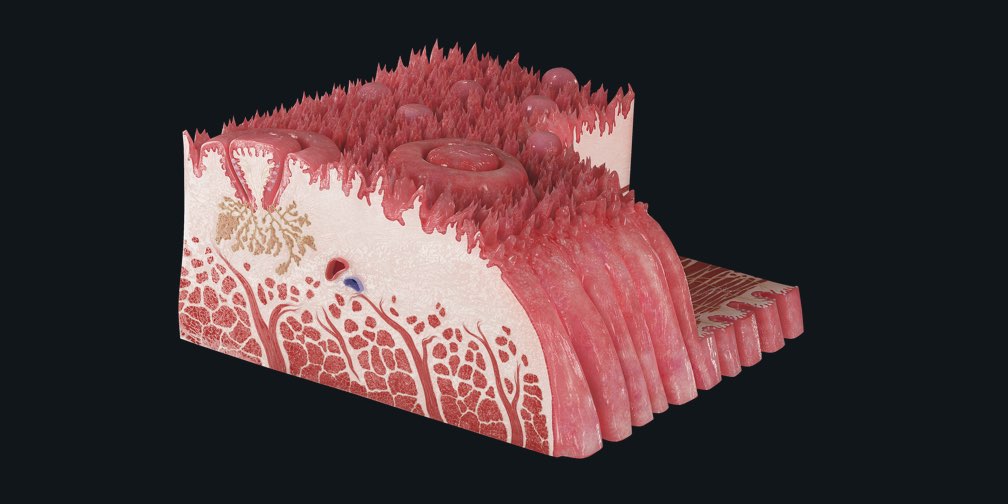
Have you ever heard the term “there’s no accounting for taste”? Well, whoever said that has clearly not seen our tongue microanatomy model.
The term “taste” refers to a bundle of sensations. The taste of food relies on smell, temperature, texture along with the sensations perceived by the tongue. ?
The primary taste sensations are:
- Salty
- Sour
- Sweet
- Bitter
- Umami (savoury)
Fatty is thought to be the sixth basic taste, with new research suggesting that there are receptors specially for fat also found on the tongue.
How do we perceive these tastes as flavours?

Food contains chemical substances, which are released in the mouth and detected by sensory cells.
Sensory cells are located on taste buds or papillae, which are found scattered all over the tongue. In particular, the fungiform, vallate and foliate are the papillae responsible for the detection of different tastes.
Once activated, the sensory cells transmit messenger substances, which in turn activate further nerve cells. These nerve cells then pass information for a particular perception of flavour on to the brain. ?
Through this network of activity, different flavours can deeply influence mood, emotion and memories. The taste of ice cream or chocolate can trigger the happy emotional regions of your brain, bringing a new meaning to the term “comfort food”. ?
The truth behind the tasting zones
Contrary to popular belief that certain zones of the tongue can only experience one taste, all parts of the tongue can actually detect all 5 basic tastes.
The sensory cells in each zone only differ based on varying levels of sensitivity to different tastes. The full experience of flavour is only produced after all the sensory cell profiles from the different parts of the tongue are combined.
Assuming 5 basic tastes and 10 levels of intensity, 100,000 different flavours are possible. That’s a lot of tasting to get through! ?